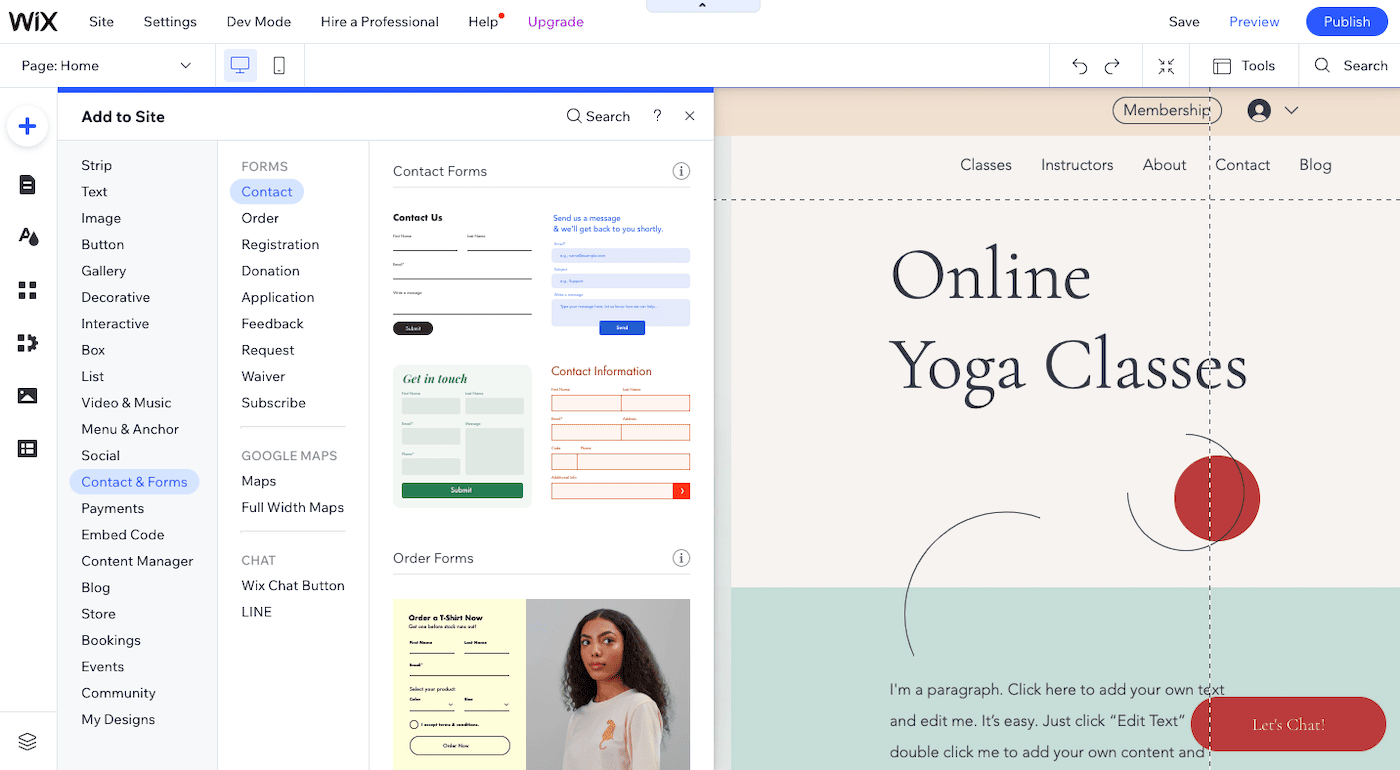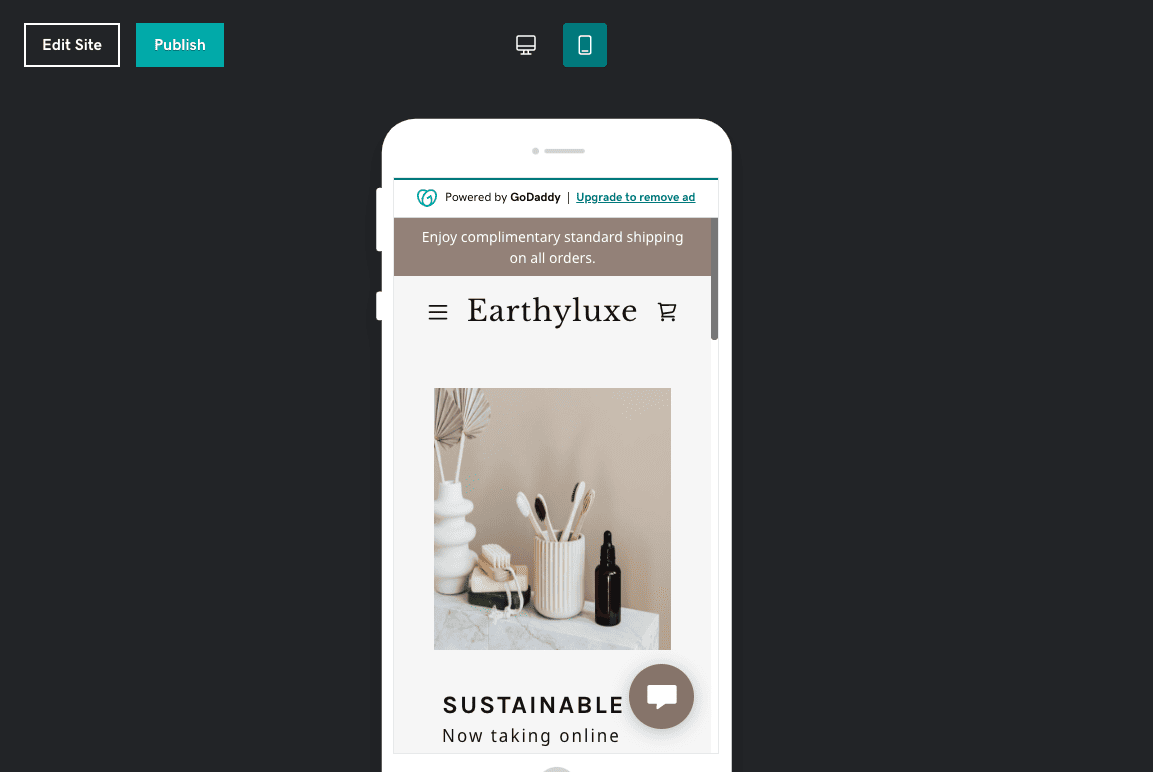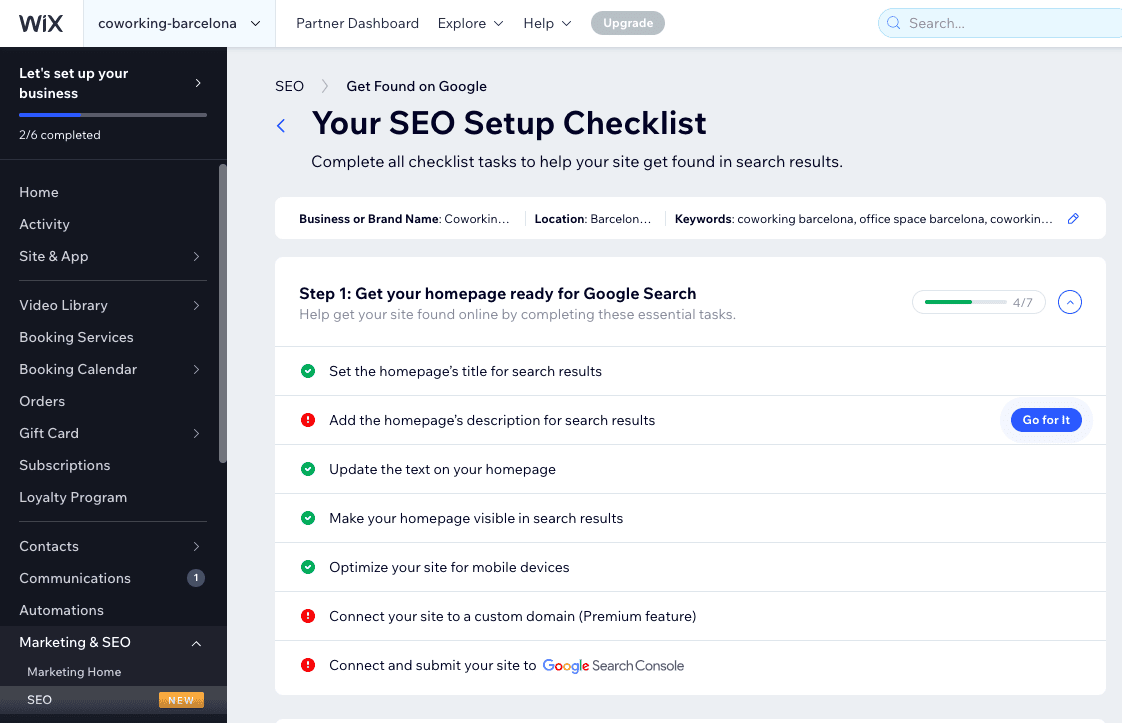Tooltester is supported by readers like yourself. We may earn an affiliate commission when you purchase through our links, which enables us to offer our research for free.
When you’ve worked with website builders for as long as I have, you start to see some patterns emerge. Mainly, around the kinds of users that opt for each website builder.
Wix tends to be popular with small businesses and bloggers. Squarespace is widely used by creative professionals. And WordPress is the top pick for those who like to have more control over their website (and don’t mind saving a few extra bucks along the way).
But, is it really that cut and dry? Especially when there’s so much overlap between what’s on offer?
Take Wix and Squarespace for example. On paper, their feature lists sound almost identical (modern templates, blogs, ecommerce, online bookings, membership sites, and more). It doesn’t help that their pricing is almost exactly the same, either.
It’s no surprise, then, that choosing a website builder can be an overwhelming task. To help make the decision a little easier, I’ll be covering the top things to consider when choosing a website builder, in order to find the best solution for your project.
Together, we’ll look at the five key steps to choosing a website builder:
- Evaluating your needs
- Researching website builders
- Testing out different platforms
- Making your final decision; and
- Implementing your chosen tool.
So, let’s get started on finding that perfect fit.
1. Evaluate Your Needs
Before selecting a website builder, it’s important to evaluate your needs and determine what you want to achieve with your website. Knowing these factors will help you narrow down the list of potential website builders.
Here are the steps you can take in doing that:
Get Clear On Your Goals
Start by asking yourself why you need a website in the first place. Are you looking for an online presence to showcase your business or services? Do you need ecommerce capabilities or an online booking calendar? Or do you just want a simple blog? Once you’ve identified your goals, it will be easier to find the right platform that meets all of them (and to rule out the ones that don’t).
Assess Your Technical Skills
It’s also important to consider how much technical knowledge and experience you have. If coding isn’t something that comes naturally to you, then look for platforms with drag-and-drop editors or templates so that creating pages is easy even without any HTML knowledge (we have a handy list of drag-and-drop builders here, and no-code builders here). On the other hand, if coding isn’t an issue for you, then more advanced options like WordPress may be better suited for your needs.
Don’t Budge on Your Budget
Finally, take into account how much money can realistically be spent on building and maintaining a website. Some platforms offer free versions but they often come with limited features (e.g. ads, inability to use your own domain, limited support), which may not meet all of your requirements as well as paid plans would. If you’re looking to create a professional website, I’d suggest upgrading to remove the ads. However, if you’re just looking to create a personal site, such as a resume or a wedding website, a free site might be all you need.
Tip: If you’re on a tight budget, it’s worth taking a look at our roundup of the cheapest website builders, which can start at as little as $9/year!
Most website builders offer monthly or yearly subscriptions, which range between $10-30 per month. These subscriptions usually include hosting, templates, and some additional features.
However, with WordPress (which is technically free to use), there will be additional costs associated with hosting services, plugins/add-ons, etc. So factor those into consideration too before making any decisions about which platform works best for your budget constraints.
Tip: We have a detailed guide on how much you can realistically expect to pay for a website here.
Once you have identified your goals, assessed your technical skills, and estimated your budget, it’s time to begin researching website builders that meet your needs.
2. Research Website Builders
So now that you’re clear on what you’re looking for in a website builder, it’s time to shortlist some options that meet those needs.
Here, I find it useful to start with some good old Googling. From my own experience, I’d recommend avoiding suggestions that come from the website builders’ own websites (for obvious reasons), and from giant Forbes/CNET-esque sites (who tend to cover a broad range of topics, but not in great depth).
Of course, you could also check out this website’s recommendations for the top website builders (think of it as our version of your typical cooking show’s “Here’s what we prepared earlier”). We’ve put these together based on our own extensive testing, so you can be sure that these are the very best options available for your specific needs:
- The easiest website builders for beginners
- The cheapest website builders
- The best website builders for SEO (search engine optimization)
- The best website builders for small businesses
- The best website builders for ecommerce
- The best website builder for portfolios
Tip: If you browse to the navigation bar at the top of the page, hover over ‘Website builders’, then down to ‘Best website builders for…’, you’ll find plenty more of our recommendations for specific industries (such as restaurants, videographers, and more).
Wix, with 200 million users worldwide, is a flexible website builder that offers a suite of features, including online payments, e-commerce, booking appointments, and a members area for premium content. Wix also has good SEO capabilities for improved visibility on Google, although its page loading speeds can be on the slower side. While Wix offers an ad-sponsored free plan, its paid plans can be pricier than other website builders. But, the extra features you get in return often make the investment worth it. Learn more in our Wix review.
Squarespace is a website builder that has been a staple since 2003, with millions of websites created on their platform. It’s the perfect choice for the creative crowd and boasts a sleek, eye-catching design. Content creators can turn their dreams into a reality with Squarespace’s advanced blogging options, subscription-only member areas, podcast hosting, e-commerce, and integrated social media tools. However, it’s not suitable for larger websites, or for creating multilingual sites. Learn more in our Squarespace review.
Shopify, the world’s top website builder for e-commerce, supports over 2 million merchants, ranging from small stores to multinational brands. With a simple-to-use editor and intuitive backend, it offers an all-in-one solution for launching and managing an online store. Shopify allows for multilingual and multicurrency stores, which is useful when selling to an international audience. However, Squarespace and Wix offer more affordable plans for online sellers. Additionally, Shopify has limitations in advanced blogging features and some SEO capabilities. Learn more in our Shopify review.
GoDaddy’s website builder combines ease of use, modern designs, premium features, and affordability, making it an excellent option for small businesses and freelancers. It’s a good choice for those who need to set up an online presence, with an impressive range of marketing tools at your disposal. However, GoDaddy’s simplified editor may not be suitable for those who want full design control, and its SEO options are limited. What’s more, the blog editor is only suitable for simple blogs. Learn more in our GoDaddy Website Builder review.
Hostinger’s website builder may not be as well-known as the others on this list, but it’s still worth checking out. It’s intuitive, budget-friendly, and easy to use. With a drag-and-drop editor similar to Wix’s, modern templates, and AI content creation tools, it’s perfect for small businesses, freelancers, and individuals who need a simple, easy-to-launch website. But, its limited ecommerce functionality may not work for those looking to open a large online store or sell internationally. Plus, Hostinger’s blogging platform is still in its infancy and is not suitable for serious bloggers. Learn more in our Hostinger Website Builder review.
WordPress is an incredibly powerful content management system (CMS) that now powers almost half of all websites on the Internet. It’s highly customizable, flexible, and can be used to create any kind of website you want. With around 60,000 plugins available, no website builder or CMS even comes close to offering the enhanced functionality that a WordPress site can. While the bare-bones version of WordPress offered via WordPress.org is free, the hosted version found through WordPress.com offers web hosting, pre-installed plugins, a selection of themes, and dedicated support. Learn more in our WordPress.com review.
At this point, it’s really just about picking out 3-5 options you think could work for you – you don’t have to get too bogged down in the detail just yet.
Reading reviews and testimonials can also be helpful at this stage. Reviews provide an unbiased look at how others have experienced the platform’s performance and customer service. Testimonials give insight into how other businesses are using the platform to meet their needs. And even speaking to friends and family who have their own websites can be a useful source of inspiration.
Tip: If you can’t find a website builder that meets all your needs, you might need to consider hiring a designer and developer to get a custom-built site. We take you through the pros and cons of that approach in this article.
3. Test Out Different Platforms
Now comes the fun part! Testing out different platforms is an unmissable step in the website building process. That’s because it gives you a hands-on feel for how it works – and, most importantly, whether it will work for you.
Luckily, most website builders will let you try using their platform for free – whether that’s through a free trial (usually 14 days), or a free plan. At this point, you shouldn’t need to hand over any credit card details – just some contact details, and an account login.
Once you’ve signed up to try them out, it’s time to roll up your sleeves! First of all, it’s important to examine their templates to make sure you can create a unique website tailored to your business. Look for platforms that offer a good selection of customizable themes that are easy to edit. Wix and Squarespace, for example, are renowned for their eye-catching designs.

A few of the stylish templates offered by Squarespace
Another important aspect to consider is testing the editor and making sure it’s easy to use and intuitive enough to accomplish what you need. Many website builders have drag-and-drop functionality, which makes it easy to customize your design without needing coding knowledge. Others, like WordPress or Webflow, may be more complex, but offer greater flexibility if you need a website that’s more personalized to your brand.

Wix’s flexible editor lets you drag and drop different types of content anywhere on the page
In addition to design, it’s a good idea to check what type of support options are available if you run into any issues while setting up your site. You don’t want to be stuck without help if you need it! (We’ve previously tested the quality of support provided by different website builders.)
It’s also important to test for mobile responsiveness. A mobile responsive website means that the design and layout of your website automatically adjust to fit the screen size of the device that your visitor is using. This ensures that your website looks great and functions properly, regardless of whether it’s being viewed on a desktop computer, tablet, or smartphone.
Many website builders are responsive by default, and you can actually check this by previewing the mobile version of your site in the editor. However, others (e.g. Wix) require a little manual tweaking before a site looks 100% mobile-ready.

GoDaddy’s mobile site previewer
Having a mobile responsive website is also important for search engine optimization (SEO) – another important factor to keep in mind while testing out a website builder. Google and other search engines now prioritize mobile-friendly websites in their search results. So, if your website is not mobile responsive, it could hurt your search engine rankings and make it harder for potential customers to find you online.
Aside from this, it’s a good idea to check out the website builder’s SEO settings, and how much of your site they will let you customize for search. Some website builders offer advanced SEO options to help boost your chances of getting found online, whereas others such as GoDaddy and Hostinger offer the bare minimum (e.g. the ability to edit page titles and descriptions only).

Wix gives you a personalized checklist of steps for optimizing your website for Google
Tip: If the concept of SEO is completely new to you, don’t worry! We have a guide on everything you need to know about SEO here.
Finally, consider your future needs. Sure, you might only be creating a simple business site now, but what if you want to take appointment bookings in the future, or sell products online? Does your website builder offer features to support that and, if not, do they let you integrate with external plugins that do? Keep the big picture in mind, and make sure your website builder is equipped to scale with your plans.
4. Make Your Final Decision
Making the final decision about which website builder to use for your business can be a daunting task. But it doesn’t have to be. To make sure you choose the best fit for your needs, it really all boils down to these two considerations:
Weighing the Pros and Cons of Each Option
It’s important to think about both the good and the bad when evaluating different website builders. Consider how easy each platform is to set up and manage, and whether they offer any additional features that could benefit you in terms of marketing or analytics capabilities down the line.
Analyzing Cost versus Value of Each Platform
Price is definitely something to keep in mind, but don’t let cost be the only factor you consider. Look at what each provider offers relative to their price point so that you get the most for your money without sacrificing the quality of service or features you need to succeed online.
Ultimately, choosing the right tool is all about finding one that fits all your requirements while still providing great value overall. Think about what website builder will work best with your current setup and any integrations you might need from third-party sources like payment processors or email marketing software.
Once you’ve weighed the pros and cons, analyzed the cost versus the value, and found the best fit for your business needs, it’s time to move on to implementation. Choosing the right platform is important, but what’s even more important is taking action and putting your plans into motion.
5. Implement Your Website Builder Choice
So you’ve zeroed in on your chosen website builder – congrats! If you’ve followed the steps we’ve outlined in the article, you can be confident that you’ve made the right choice.
Of course, that’s really just the beginning of your online journey. Now, it’s time to:
And, go live!
Once you’ve got into the groove of running your website, you might also want to think about the following – click on the links below to learn more about each step:
Choosing a Website Builder: Conclusion
Choosing the right website builder is a big decision, no matter how big or small your project is. It’s important to carefully evaluate your needs, do your research, and test out different platforms to make an informed decision.
There are many resources available to help guide you through this process, offering comprehensive reviews and ratings to help you find the perfect website builder. Our own website, Tooltester, focuses on providing detailed information about each product’s features, pricing plans, and customer service quality, making it easy to compare different solutions and pick the one that’s right for your needs. I encourage you to browse through our website, and to let me know in the comments below if you need more help!
With the right website builder, you can create an amazing online presence quickly, easily, and affordably. So, start building your dream site today with confidence!
THE BEHIND THE SCENES OF THIS BLOG
This article has been written and researched following a precise methodology.
Our methodology


